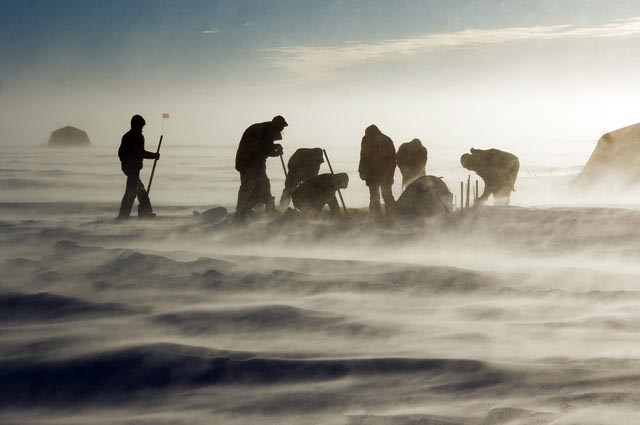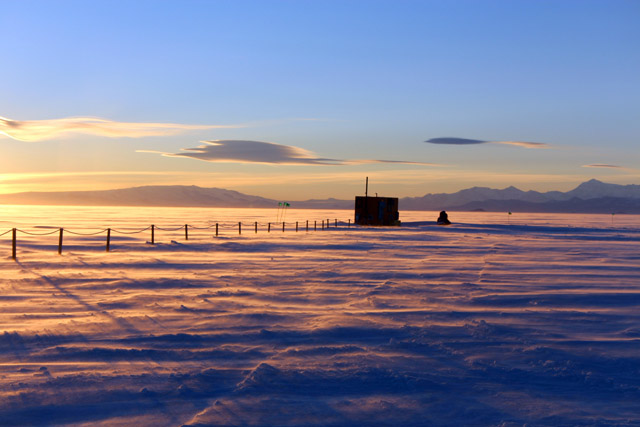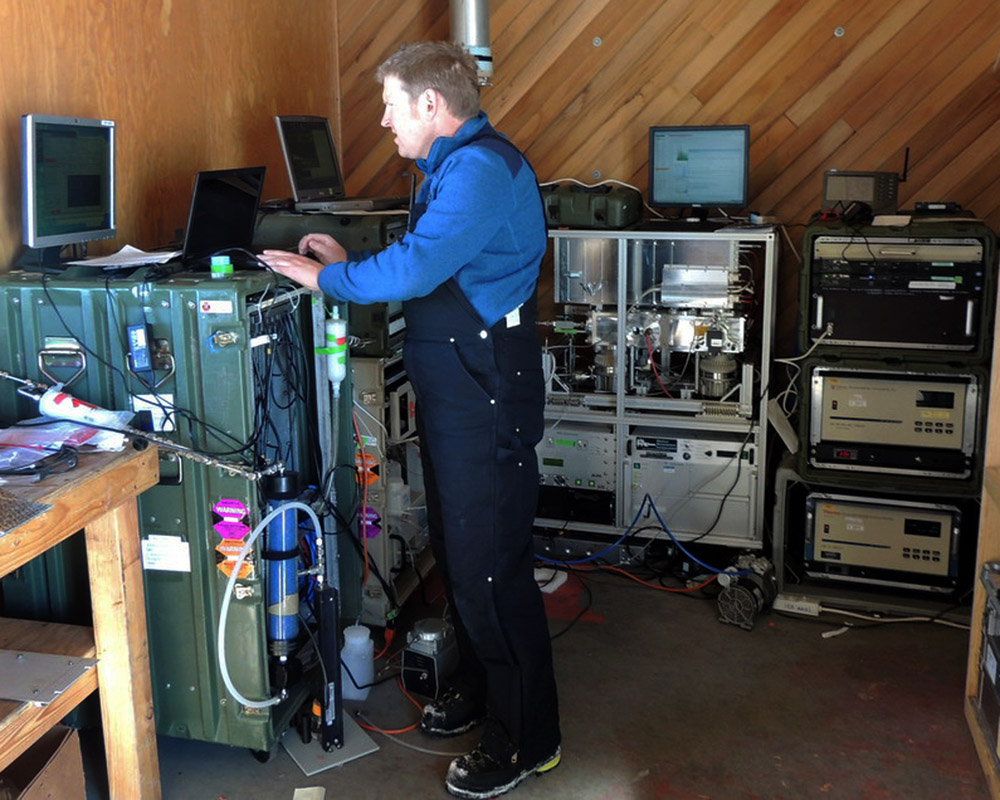Salt sprayResearch on the transport of natural aerosols to help studies on ice cores, climatePosted December 5, 2014
It would seem to be a conspiracy theorist’s dream: A team of scientists working in a remote location in Antarctica. An exclusion zone with a buffer radius of two kilometers. The project even has a mysterious name: ZODIAC. What are they investigating? Try aerosols – tiny particles of all shapes, sizes and composition that are suspended in the atmosphere. There are naturally occurring sources such as sea salt and volcanos, and other man made sources that have come to dominate the air since the Industrial Revolution, such as black carbon from soot. NSF-funded research
Lars Kalnajs and John Cassano, University of Colorado at Boulder,
Award No. 1341628
A team of atmospheric scientists, led by Lars Kalnajs at the University of Colorado at Boulder and Peter DeCarlo at Drexel University, are making some of the first real-time measurements of aerosol size and composition in Antarctica. “Antarctica is really at the frontier of aerosol science. It’s the least studied of the continents when it comes to aerosols,” Kalnajs said during a presentation near McMurdo Station. The largest research facility in Antarctica, McMurdo Station is managed by the National Science Foundation, which is also funding the atmospheric research. The study is taking place on the sea ice, near the ice edge, where winds out of the northwest carry aerosols from sea salt spray right toward the team’s orange-colored fish hut, a wooden building on skis with a large No. 17 painted on the side. Powerful southerly winds also swoop through Area 17 after taking a circuitous path around Ross Island by way of the active Erebus volcano. Inside the hut, instruments perform various analyses on the aerosols that are brought into the building from a sampling system on the roof. “In order to get the data we want, we’re running about a dozen instruments 24 hours a day. It’s quite a big undertaking,” Kalnajs said. The study is called 2-season Ozone Depletion and Interaction with Aerosol Campaign, or the creatively composed acronym, ZODIAC. The first season is happening now, through the peak of the austral summer. The second half of the field project will begin in the late winter of 2015 when there are 24 hours per day of darkness in order to tease out seasonal differences in aerosol content and quantity. Why Antarctica? 
Photo Credit: August Allen/Antarctic Photo Library
Winds, like those above, can carry snow hundreds of kilometers, depositing it across the ice sheet. Researchers are interested in the connection between aerosols and the snowpack, which can act as both source and sink for microscopic particles.
That’s easy: It’s the world’s most isolated continent with the cleanest air. The ZODIAC scientists are interested in sampling aerosols from natural sources, whether from the ocean or a volcano. Pollution from factories, automobiles, agriculture, and other anthropogenic (human-caused) sources, create enough particulates to mask the natural background aerosols in more populated areas. The reasons as to why scientists are even interested in naturally occurring aerosols, particularly in Antarctica, are a bit more complicated – but they mainly involve studying atmospheric chemistry and climate, both past and present. The global warming story is well known at this point: Greenhouse gases like carbon dioxide and methane trap the sun’s energy in the atmosphere rather than allowing it to radiate back into space. However, the same polluting activities – riding in a car, flying in an airplane – that create those gases also produce tiny particulates in the atmosphere. Some aerosols actually reflect some of the sun’s energy back into space before it can become trapped in the Earth’s atmosphere. “One of the reasons we study aerosols is to understand how much [aerosols] offset that CO2 warming,” DeCarlo said. There is a yin-yang effect to filling the skies with particles. Less global warming means more global hazing and pollution. “Breathing aerosol particles in high concentrations isn’t good for you,” DeCarlo noted. 
Photo Credit: Peter DeCarlo
The ZODIAC field site at midnight – the production of aerosols from the layer of blowing snow is one of the phenomena the ZODIAC team will be studying.
In Antarctica, researchers are particularly interested in the connection between aerosols and the snowpack, which can act as both source and sink for microscopic particles. Winds can carry the snow hundreds of kilometers, depositing it across the ice sheet. Eventually, that snow turns into glacial ice, trapping bubbles of air and aerosol particles that were carried to Antarctica from around the globe. Cores drilled out of the ice sheet provide a rich record of past climate and environment reaching back hundreds of thousands of years. For example, the presence of soot in an ice core might indicate a forest fire, which provides clues about the amount of biomass on the planet in the past. Ash in the ice offers a particularly clear window into ancient volcanic activity. Techniques that enable scientists to date the ice core data also allow them to pinpoint when these events took place with amazing confidence. Kalnajs explained that developing a better understanding of climate from ice cores requires a better understanding of the chemical and physical processes that take place. “To get an accurate reconstruction from these cores we need to know the processes of how they get into the core and how are they modified going into the snowpack,” he explained. The goal of understanding something so small requires many instruments and a big amount of data. For example, an aerosol mass spectrometer in the Area 17 fish hut produces the equivalent of one high-definition movie per second. The experiment is only now getting underway. However, the first few days are already revealing some interesting results, according to Kalnajs. “We’re already seeing dramatic differences between air coming from the interior of the continent and air that comes from the ice edge and over the sea ice,” he said. |



For USAP Participants |
For The Public |
For Researchers and EducatorsContact UsU.S. National Science FoundationOffice of Polar Programs Geosciences Directorate 2415 Eisenhower Avenue, Suite W7100 Alexandria, VA 22314 Sign up for the NSF Office of Polar Programs newsletter and events. Feedback Form |


